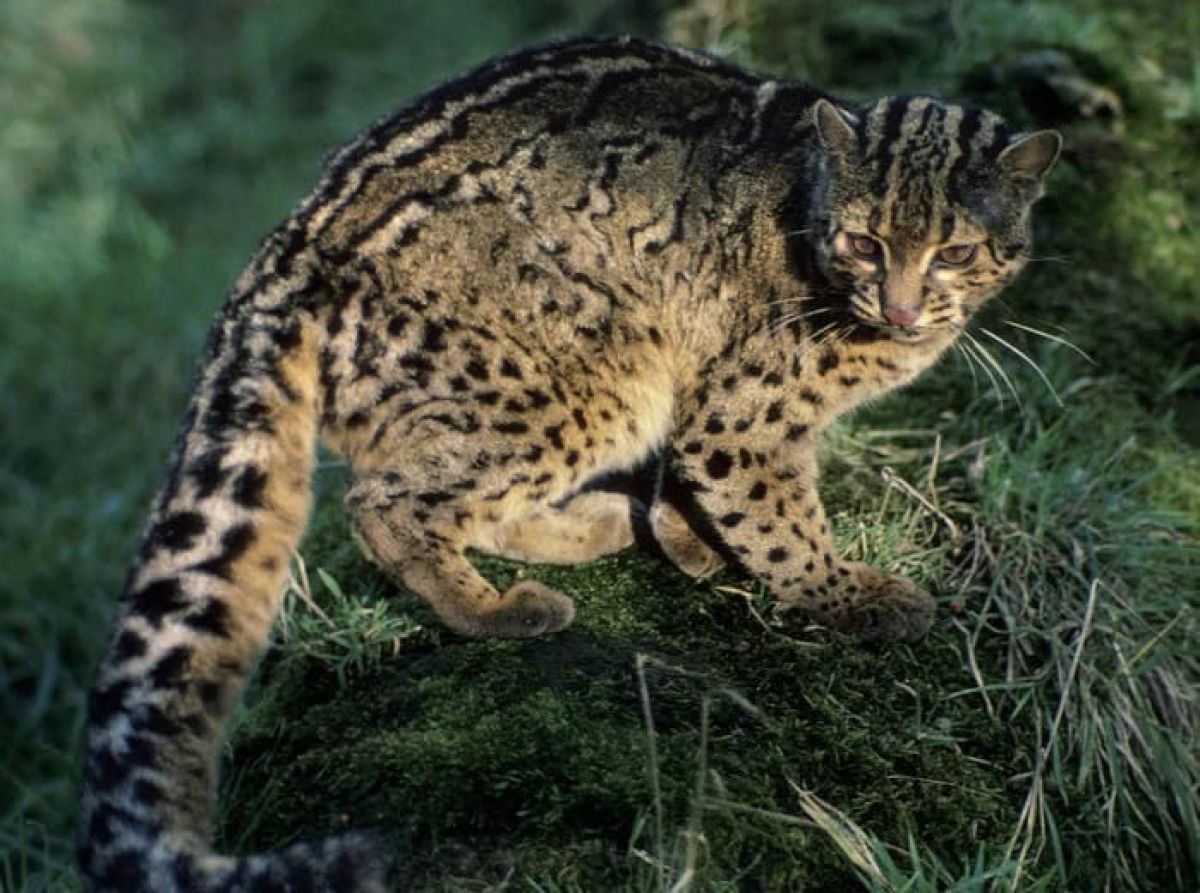The Marbled Cat: Nature’s Master of Camouflage

The marbled cat (Pardofelis marmorata) is one of nature’s most intriguing felines, often overshadowed by its more well-known relatives such as lions, tigers, and domestic cats. Although it is less famous, the marbled cat possesses a unique set of traits and adaptations that make it a fascinating subject for wildlife enthusiasts and researchers alike. Found primarily in the dense forests of Southeast Asia, this elusive creature has captured the attention of conservationists and zoologists due to its rarity and the crucial role it plays in its ecosystem.
Physical Characteristics
The marbled cat is a small to medium-sized wild cat, approximately the size of a domestic cat, with a sleek, elongated body and short legs. One of its most striking features is its beautiful fur: a rich, marbled pattern of dark patches against a golden to grayish-brown background that provides excellent camouflage in the dappled light of its forest habitat. This stunning coat not only aids in hiding from predators and prey but also serves as a reminder of the incredible adaptations of this species to its environment.
Adult marbled cats weigh between 5 to 11 pounds (2.5 to 5 kg) and measure around 18 to 30 inches (45 to 76 cm) in length, with a tail that can be as long as its body, adding to its graceful appearance. Their eyes are large and almond-shaped, providing excellent night vision, which is essential for a largely nocturnal lifestyle. The subtle beauty of the marbled cat is further enhanced by its long whiskers and tufted ears, which help it navigate the dense underbrush of its forest home.
Habitat and Distribution
Marbled cats are primarily found in the rainforests of Southeast Asia, particularly in countries such as Indonesia, Malaysia, Thailand, and Myanmar. They prefer mountainous and hilly areas where they can thrive amongst the trees, often residing at altitudes of 900 to 2,400 meters (3,000 to 8,000 feet). This arboreal cat is adept at climbing and spends a significant amount of time in trees, using its exceptional agility to hunt and escape from threats.
Behavior and Diet
As solitary animals, marbled cats have a mostly nocturnal lifestyle, embarking on nightly foraging trips. Their diet consists mainly of small mammals, birds, and reptiles, which they stalk and ambush with a combination of stealth and agility. The marbled cat is known for its remarkable climbing abilities, often pouncing on its prey from a hidden perch. This skill allows the marbled cat to take advantage of its three-dimensional environment within the forest canopy, making it a proficient hunter.
Unlike many felids, marbled cats are also known for their vocalizations, producing a range of sounds from hisses and growls to soft growls and purrs. These vocalizations are believed to play a crucial role in communication, especially during mating season, when males and females call to each other to establish territory and attract partners.
Conservation Status
The marbled cat is currently classified as “Near Threatened” on the IUCN Red List, primarily due to habitat loss and fragmentation caused by logging, agricultural expansion, and human encroachment. As their forest habitats are destroyed or altered, marbled cats face dwindling prey availability and increased competition with other species.
Conservation efforts are being established to protect this elusive feline and its habitat. Initiatives focus on creating wildlife corridors, implementing sustainable land-use practices, and investing in education programs that raise awareness about the importance of preserving rainforests and their inhabitants. Additionally, further research into the ecology and behavior of marbled cats is essential for developing effective conservation strategies.
Conclusion
The marbled cat may not be as renowned as its larger cousins, but its exquisite beauty and remarkable adaptations make it a vital component of the ecosystems in which it inhabits. By understanding and protecting these elusive creatures, we can ensure their survival for generations to come. As the world continues to change, the marbled cat remains a poignant reminder of the delicate balance within the natural world and our responsibility to safeguard it.



